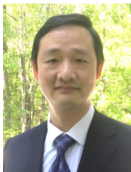Electronic defects within the band gap of semiconductor materials play critical roles in determining the efficiency and stability of their photovoltaic devices. Eliminating deleterious defects in semiconductors or passivating them during the fabrication process of solar cells has become one of the most fundamental tasks for the solar cell society. This scenario is also prevailing in the metal halide perovskite solar cell community, which has witnessed a rapid increase of the power conversion efficiency (PCE) of perovskite solar cells from 3.8% to close to 26% with overwhelming reported progress on defect passivation strategies which also enhance the stability of perovskite solar cells. Any further improvement of the efficiency or stability of perovskite solar cells toward their Shockley-Queisser limitations have to rely on deeper understandings on the nature of defects in perovskite to squeeze out all non-radiative charge recombination paths by eliminating or passivating them.
Defects in perovskites have already been intensively studied in recent years, but there is still no consensus on the defect chemical nature, their distributions, and their evolution during degradation. For example, calculations gave controversial results, i.e. different defects, including halide interstitials and metal vacancies (VPb) or antisite (IMA), that cause deep traps in the most studied and simplest perovskite of methylammonium lead triiodide (MAPbI3). In this talk, I will first present our demonstration that using the drive-level capacitance profiling (DLCP) technique to profile both the spatial and energetic distributions of charge traps in perovskite solar cells. Then I will report our progress in combining the DLCP technique with electrical poling to determine the charge states and eventually the chemical nature of mobile defects in perovskites. This study revealed some astonishing discovery on the defects in perovskites of different compositions, and mechanism of solar cell degradation under reverse bias and under illumination. If time allows, I will also present our progress in the development of efficient perovskite minimodules, including both single junction, bifacial and tandem ones.

Jinsong Huang is currently Louis D. Rubin, Jr. Distinguished Professor at University of North Carolina at Chapel Hill. He received his PhD degree in Material Science and Engineering from the University of California-Los Angeles in 2007. After working in a small business company for two years, he joined the University of Nebraska-Lincoln in 2009 as an assistant professor in the Department of Mechanical and Materials Engineering, and was promoted to associate professor with tenure in 2014, and professor in 2016. He joined the faculty in the department of Applied Physical Sciences of University of North Carolina at Chapel Hill in 2017. His current research interests include solution processed electronic materials for applications in energy, sensing, and consumer electronics. He has authored > 250 publications, >30 patents, >10 books and book chapters.
